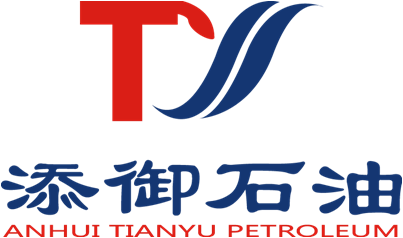
14
2025
-
07
Common Issues with Crankshafts in Heavy-Duty Machinery and How to Fix Them
Common Issues with Crankshafts in Heavy-Duty Machinery and How to Fix Them Table of Contents Introduction to Crankshafts in Heavy-Duty Machinery Understanding Crankshafts: Function and Importance Common Issues with Crankshafts Excessive Wear and Tear Crankshaft Twist and Misalignment Crankshaft Failure Due to Overloading Oil Lea
Common Issues with Crankshafts in Heavy-Duty Machinery and How to Fix Them
Table of Contents
- Introduction to Crankshafts in Heavy-Duty Machinery
- Understanding Crankshafts: Function and Importance
- Common Issues with Crankshafts
- Excessive Wear and Tear
- Crankshaft Twist and Misalignment
- Crankshaft Failure Due to Overloading
- Oil Leakage and Lubrication Issues
- Diagnosis of Crankshaft Problems
- Repair Techniques for Crankshaft Issues
- Preventative Maintenance for Crankshafts
- Conclusion
- Frequently Asked Questions
Introduction to Crankshafts in Heavy-Duty Machinery
Crankshafts play a crucial role in the operation of heavy-duty machinery. They convert the linear motion of pistons into rotational motion, driving the wheels and enabling the machinery to perform its intended functions. Understanding the common issues associated with crankshafts is essential for maintaining machinery efficiency and longevity.
Understanding Crankshafts: Function and Importance
Crankshafts are robust shafts found in various types of engines, including those used in heavy-duty machinery. They are designed to withstand extreme pressures and forces, making them vital for engine performance. The quality of the crankshaft directly impacts fuel efficiency, engine power, and overall machinery durability.
Common Issues with Crankshafts
As with any mechanical component, crankshafts are susceptible to several issues that can affect machinery performance. Understanding these problems allows for timely interventions and repairs.
Excessive Wear and Tear
One of the most common problems faced by crankshafts is excessive wear and tear. This can occur due to inadequate lubrication, poor engine maintenance, or using substandard oil. Symptoms may include knocking sounds, vibrations, and a decrease in performance. Regular inspections and the use of high-quality lubricants can mitigate this issue significantly.
Crankshaft Twist and Misalignment
Crankshaft twist occurs when the crankshaft is subjected to forces beyond its design limits, often due to improper installation or extreme operational conditions. Misalignment can lead to uneven wear across the bearing surfaces, resulting in premature failure. Monitoring the alignment during installation and using precision tools during assembly can help prevent these issues.
Crankshaft Failure Due to Overloading
Heavy-duty machinery often operates under extreme loads. Overloading can result in crankshaft failure, characterized by cracks or breaks in severe cases. Operators must be aware of the machinery’s load limits and avoid exceeding them. Regular inspections for signs of stress can help catch issues before they lead to failure.
Oil Leakage and Lubrication Issues
Oil leakage can severely impact crankshaft performance by leading to inadequate lubrication. This not only accelerates wear but can also cause overheating. Identifying and repairing oil leaks promptly, along with ensuring proper oil levels, is essential for maintaining crankshaft health.
Diagnosis of Crankshaft Problems
Diagnosing crankshaft problems involves a combination of visual inspections, noise assessments, and vibration analysis. Technicians should look for common symptoms, such as unusual sounds or vibrations, during operation. Advanced diagnostic equipment can also assist in identifying underlying issues not visible to the naked eye.
Repair Techniques for Crankshaft Issues
When problems arise, knowing how to effectively repair crankshaft issues can save time and money.
Reconditioning the Crankshaft
Reconditioning is a viable option for crankshafts that have suffered from wear but are not beyond repair. This process often involves grinding the bearing surfaces to restore appropriate tolerances and may include polishing to reduce friction. Skilled technicians can execute this process, ensuring that the crankshaft is restored to its original specifications.
Balancing and Alignment
After repairs, it's crucial to ensure that the crankshaft is properly balanced and aligned. Imbalance can lead to excessive vibrations, which can further damage the crankshaft and other engine components. Using precision balancing tools and alignment fixtures during installation can ensure optimal performance.
Preventative Maintenance for Crankshafts
Preventative maintenance is key to prolonging the life of crankshafts in heavy-duty machinery. Regularly scheduled maintenance checks should include:
- **Lubrication checks**: Ensure the oil is of high quality and at the correct level.
- **Visual inspections**: Look for signs of wear, cracks, or misalignment.
- **Operational monitoring**: Keep an eye on load conditions and avoid exceeding specifications.
Implementing these practices can reduce the risk of serious crankshaft issues.
Conclusion
Understanding common issues associated with crankshafts in heavy-duty machinery is essential for operators and mechanics alike. By identifying problems early, diagnosing them accurately, and implementing effective repair techniques, we can ensure machinery runs smoothly and efficiently. Regular maintenance coupled with a keen eye for potential issues can extend the life of crankshafts and enhance overall machinery performance.
Frequently Asked Questions
1. What are the signs of a failing crankshaft?
Common signs include unusual noises, excessive vibrations, oil leaks, and a noticeable drop in engine performance.
2. How often should crankshafts be inspected?
Crankshafts should ideally be inspected during regular maintenance intervals, typically every 500 to 1000 operating hours, or as recommended by the manufacturer.
3. Can a damaged crankshaft be repaired?
Yes, minor damages can often be repaired through reconditioning. However, severely damaged crankshafts may need to be replaced.
4. What causes crankshaft misalignment?
Misalignment can result from improper installation, wear in the supporting bearings, or damage to adjacent components.
5. How can I extend the life of my crankshaft?
Regular maintenance, proper lubrication, and adherence to load limits can significantly extend the lifespan of your crankshaft.
By addressing these common issues and maintaining a proactive approach, we can enhance the reliability and efficiency of heavy-duty machinery.
Contact Us
E-mail :
hldfhldf@188.com
Phone/Wechat:
+86-13339133258
Address:
19#, Zhihe Road, Economic & Technological Development Zone, Xuancheng, Anhui, China





